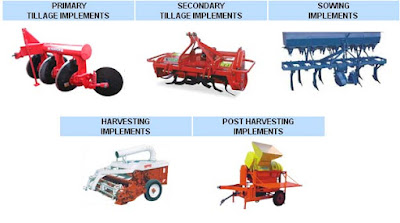“Retail development trends over the
past few years in Riyadh indicates that the capital city is growing towards the
Central areas, where the retail projects have the highest rental prices and
experience lesser vacancy rates.”
Research Analysts
at Ken Research in their latest publication “Riyadh Retail Market Outlook to 2023-Dominance of
Online Shopping and Emergence of International Brands to Fuel Demand for Retail
Space”
believe that introducing a better tenant-mix, investment in
entertainment sector, entrance of international brands, increasing awareness
among consumers and implementing omni-channel strategies will contribute to an
increase in the demand within Riyadh retail sector over long term.
Central Riyadh was
observed as the leading attractive area for development of retail projects, as it has the
benefits of high population, quality infrastructure and better connectivity
with other regions in Riyadh. In addition to that, the central region is the hub
for financial districts and the employees are in need for recreational spaces
to relax. The international brands are opening their stores within the central
region thus indicating a strong demand for retail spaces. The state budget of
FY’2018 declared an allocation for public spending and amounted to over SAR 1.1
trillion. The government has recently introduced reforms including allowance of
100.0% FDI in retail sector, implementation of Saudization policy and lifting
of ban from cinemas which are collectively driving the demand in the retail
sector.
Super-regional malls
have the highest occupancy among the different mall categories followed by
regional and community center malls. Majority of the Riyadh’s housing supply is
being delivered by mid-scale and small-scale developers whereas; professional
developers are having a very limited presence. The reason behind
flourishing super-regional malls is a better tenant-mix with consumers getting all the recognized brands under one roof. The rental rates have declined from the last year owing
to the level of upcoming supply and increased competition.
Along with increase
in disposable income, the retail spending among Saudi
consumers has witnessed a growth of 6.0% over the past five years. Increasing
inbound tourism and growth in population are providing the boost to the
development in the retail real estate sector. Moreover, increasing
affordability among people of Riyadh have been forcing developers to move away
from the traditional bakalas to supermarkets and hypermarkets.
Growing Presence of
Hypermarket and Supermarket: Hypermarket and supermarket chains
continue to expand in Saudi Arabia. The total number of supermarkets and
hypermarkets in Saudi Arabia in 2016 were estimated at 1,255 stores, accounting
for approximately 2.9% of retail outlets. A major trend witnessed in recent
years is the shift in location of hypermarkets and supermarkets from
stand-alone stores towards developed regional and super-regional malls due to
the increase annual footfall across these retail formats.
Relaxation in
Investment Regulations: Given the oversupply of retail
space, especially in Riyadh, the government has eased investment regulation in
the retail sector to boost inflow of international brands into the country. In
June 2016, the Saudi government announced that it will allow foreign companies
to wholly own companies in the Saudi retail and wholesale trade sector
(allowance of 100.0% FDI). Foreign companies were previously required to
partner with Saudi investors to establish retail or wholesale outlets, and may
still find it advantageous to do so.
Key Segments Covered:-
Type of Malls
Super-Regional
Malls
Regional
Malls
Community
Center Malls
Key Target Audience:-
Retail
Project Developers
Third
Party Real Estate Companies
Independent
Architects
Government
Associations
Government
Agencies
Independent
Investors
Retail Real
Estate Consulting Companies
Time Period Captured in the Report:-
Historical Period –
2013-2018
Forecast Period –
2019-2023
Riyadh Retail Malls
Case Studies Covered:-
Pure Mall
Al Oruba
Square
Canary
Center
Localizer
Mall
Granada
Center
Centria
Mall
Keywords:-
Riyadh
Retail Market
Retail
Industry In Riyadh
Riyadh
Retail Market Supply
Market
Retailers in Riyadh
Retail
Development in Riyadh
Retail
Overview in GCC
Retail
Supply and Demand Riyadh
Future
Regional Mall Supply Riyadh
Riyadh
Retail Market Insight
Riyadh
Retail Rental Prices in Malls
Food
Retail Spending in Riyadh
Store
Based Retailing in Riyadh
Future
Retail Projects in Riyadh
Major
Retail Projects in Riyadh
Pure Mall
Retail Market Riyadh
Localizer
Mall Retail Market Riyadh
For more information on the research report, refer to below
link:-
Related Reports:-
Contact Us:-
Ken Research
Ankur Gupta, Head Marketing & Communications
Sales@kenresearch.com
+91-9015378249
Ken Research
Ankur Gupta, Head Marketing & Communications
Sales@kenresearch.com
+91-9015378249




